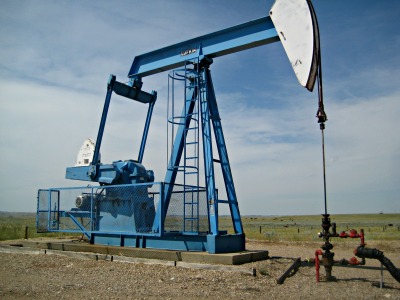- Air Homepage
- Alberta Air Quality
- Prevention of Air Pollution
- Key Air Pollutants
Identifying key air pollutants by figuring out some of industry's unknowns
Want to know how to identify key air pollutants, Schedule 2 substances? Want to better protect the environment and public health? Here is a bit about how to distinguish benign and hazardous chemicals using criteria provided in approval limits, monitoring obligations, and mandates for reporting.
 Monitoring and managing industrial emissions
Monitoring and managing industrial emissionsI include a few real-life examples provided in the guidelines, which are based on the Alberta Annual Emissions Inventory Report (AEIR) Standard. Section 14 addresses Schedule 2 substances. With this protocol, stakeholders can join in in maintaining air quality standards while fostering sustainable industrial practices.
You will enjoy this article if you need to identify and address key air pollutants emitted by your industrial operation:
- Understanding what Schedule 2 substances are enhances awareness of the pollutants that can harm the environment and human health, fostering a sense of responsibility.
- Learn about approval limits, monitoring requirements, and reporting mandates to ensure legal compliance and avoid penalties.
- Safeguard public health by identifying and regulating hazardous chemicals, relevant to anyone concerned about air quality.
- The step-by-step approach and examples presented make complex regulatory processes accessible, offering practical guidance for stakeholders involved in environmental monitoring.
- It's a good idea to promote sustainable industrial practices and pollution mitigation strategies, the text below aligns with global efforts to combat climate change.
I provide this article as a resource for individuals, businesses, and policymakers trying to reduce air pollution and protect the planet.
14.0 Identify Schedule 2 substances (Step 14)
Imagine that you are in charge of making sure the facility doesn't release harmful substances into the air. In general, there are two main types of chemicals you need to be aware of: Schedule 1 and Schedule 2. Schedule 1 chemicals are definitely bad, so we must always keep an eye on them. It's not so clear when to report Schedule 2 chemicals because not all of them are harmful.
Where to start...
14.1 Determine if Schedule 2 key air pollutants apply
Okay, so you have an industrial operation, and it's time to figure out what chemicals it's releasing. Chemicals aren't all the same, and we're especially interested in two groups: Schedule 1 and Schedule 2. Yes, Schedule 1 is a definite yes - if they meet certain thresholds, they have to be reported. Schedule 2 substances are a little trickier.
Why Schedule 2 Matters: These are chemicals that might be emitted into the air, but not all of them need to be reported. Let's focus on the things that matter, not everything else. Here are some criteria to help us decide what's important:
- If there are rules or limits for a Schedule 2 substance that are part of the industrial operation's approvals, they usually apply. Let's say there's a limit on how much Substance X the facility can release, and they release more than that.
- Schedule 2 substances are on the list if the facility environmental approvals say they have to keep an eye on them. It's in if their approvals say they must report how much Schedule 2 substance they release.
- If they reported Schedule 2 emissions to the National Pollutant Release Inventory (NPRI) for the same year, we're looking at. If they report zero emissions, it doesn't count unless they report a small amount above zero.
- A Schedule 2 substance is on the list if they do their own monitoring and find that a lot of it is being emitted.
 Protection of the environment and public health
Protection of the environment and public healthHere are some examples to help you understand:
- It's in the list if Substance A has a limit and they're releasing it a lot.
- Substance B has a limit, but they're releasing very little of it, so it's out.
- Substance C is in if they have to monitor it and it's being released a lot.
- Substance D is out if it's only in small amounts, even if monitoring is required.
- Substance E is in if they reported it to NPRI and it's significant.
- It's out if they reported Substance F as zero to NPRI and even if it's small but not zero.
- It's in if they did their own monitoring and found a lot of Substance G.
- It's out if they found just a little Substance H under the same circumstances.
This helps us focus on chemicals that can harm the environment and humans. Keep track of them and make sure companies follow the rules. Plus, it helps us understand what's going on in industry.
You can't treat all chemicals the same way, and they don't all need the same attention. We can sort them out this way and focus on what's important.
14.2 - Substances on Schedule 2
This list is like a collection of chemicals we're watching because they could harm the environment. We call them Schedule 2 substances. For example, we've got 1,1,2-trichloroethane, Acetone, Benzene, Cadmium, Formaldehyde, Lead, Mercury, Toluene, Vinyl Chloride, and more...
Substances have specific names and codes (CAS or NPRI). Alberta Environment and Protected Areas (AEPA) is interested in them because they can be released into the air and they want to make sure companies follow the rules. To keep this list up-to-date, check the AMD Reporting Chapter.
Need expert AEIR Guidance for your facility's compliance and accuracy?
Getting the most out of your emissions inventory reports with Calvin Consulting!
When setting up for Annual Emissions Inventory Report (AEIR) submissions, Calvin Consulting Group Ltd. helps you with complete data reporting and regulatory compliance. And we make sure it's done on time.
Calvin Consulting Group helps companies operating in Alberta submit accurate and compliant AEIRs. Streamline your reporting process with Calvin Consulting, from insightful source monitoring to great quality assurance and quality control.

We offer comprehensive AEIR consulting services tailored to your facility. Let us handle your AEIR submissions so you can focus on your strengths.
Clean air is our Passion...Regulatory Compliance is our Business.
Here's a step-by-step guide for pinpointing Schedule 2 substances, as designated by Alberta Environment and Protected Areas (AEPA) as crucial for environmental monitoring.
We show you how to consider criteria such as approval limits as well as monitoring and reporting instructions to shine light on what types chemicals may jeopardize human health and that of the environment. With the intent of keeping a cleaner, safer world, we provide a few examples to clear up your understanding of some of the more complex rules, and that can help you with tracking and regulating your industrial emissions.
Do you have concerns about air pollution in your area??
Perhaps modelling air pollution will provide the answers to your question.
That is what I do on a full-time basis. Find out if it is necessary for your project.
Have your Say...
on the StuffintheAir facebook page
Other topics listed in these guides:
The Stuff-in-the-Air Site Map
And,
Thank you to my research and writing assistants, ChatGPT and WordTune, as well as Wombo and others for the images.
GPT-4, OpenAI's large-scale language generation model (and others provided by Google and Meta), helped generate this text. As soon as draft language is generated, the author reviews, edits, and revises it to their own liking and is responsible for the content.



New! Comments
Do you like what you see here? Please let us know in the box below.